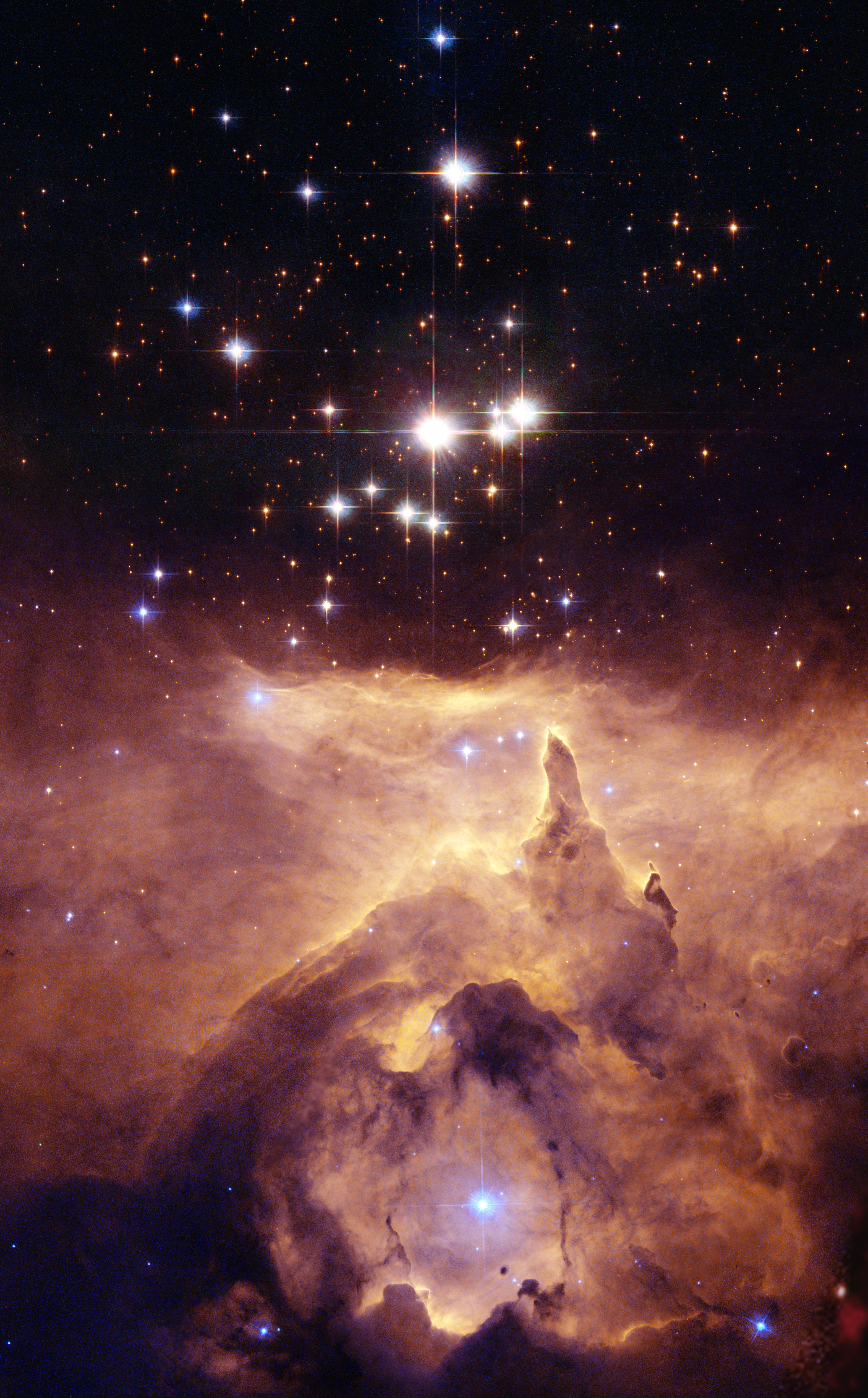Pismis 24 on:
[Wikipedia]
[Google]
[Amazon]
NGC 6357 is a
 This nebula includes the
This nebula includes the
European Southern Observatory infrared image
*
Star Forming Region NGC 6357
showing complex interactions between interstellar winds, radiation pressures and magnetic fields.
with a close-up of Pismis 24.
NGC 6357: Cathedral to Massive Stars
{{Ngc65 H II regions Scorpius (constellation) 6357 Sharpless objects Star-forming regions
diffuse nebula
A nebula ('cloud' or 'fog' in Latin; pl. nebulae, nebulæ or nebulas) is a distinct luminescent part of interstellar medium, which can consist of ionized, neutral or molecular hydrogen and also cosmic dust. Nebulae are often star-forming region ...
near NGC 6334
NGC commonly refers to:
* New General Catalogue of Nebulae and Clusters of Stars, a catalogue of deep sky objects in astronomy
NGC may also refer to:
Companies
* NGC Corporation, name of US electric company Dynegy, Inc. from 1995 to 1998
* Nati ...
in the constellation Scorpius
Scorpius is a zodiac constellation located in the Southern celestial hemisphere, where it sits near the center of the Milky Way, between Libra to the west and Sagittarius to the east. Scorpius is an ancient constellation that pre-dates the Gr ...
. The nebula contains many proto-stars shielded by dark discs of gas, and young stars wrapped in expanding "cocoons" or expanding gases surrounding these small stars. It is also known as the Lobster Nebula. This nebula was given the name War and Peace Nebula by the Midcourse Space Experiment
The Midcourse Space Experiment (MSX) is a Ballistic Missile Defense Organization (BMDO) satellite experiment (unmanned space mission) to map bright infrared sources in space. MSX offered the first system demonstration of technology in space t ...
scientists because of its appearance, which, in infrared images the bright, western part resembles a dove, while the eastern part looks like a skull. A petition by anime fans to rename it as the Madokami nebula, due to resemblance with a character, did not prosper.
It is located about ~5,500 light years away from Earth.
Associated open clusters
Pismis 24
 This nebula includes the
This nebula includes the open cluster
An open cluster is a type of star cluster made of up to a few thousand stars that were formed from the same giant molecular cloud and have roughly the same age. More than 1,100 open clusters have been discovered within the Milky Way galaxy, an ...
Pismis 24, which is home to several massive stars. One of the brightest stars in the cluster, Pismis 24-1, was thought possibly to be the most massive on record, approaching 300 solar masses, until it was discovered to be a multiple system of at least three stars; component stars would still remain near 100 solar masses each, making them among the more massive stars on record.
G353.2+0.7
The young stellar cluster G353.2+0.7 lies east of Pismis 24 and was revealed by aChandra
Chandra ( sa, चन्द्र, Candra, shining' or 'moon), also known as Soma ( sa, सोम), is the Hindu god of the Moon, and is associated with the night, plants and vegetation. He is one of the Navagraha (nine planets of Hinduism) a ...
X-ray image showing approximately 800 stars.
G353.1+0.6
The young stellar cluster G353.1+0.6 lies southeast of Pismis 24 and also contains approximately 800 stars detected by X-ray. The region includes severalO-type stars
An O-type star is a hot, blue-white star of spectral type O in the Yerkes classification system employed by astronomers. They have temperatures in excess of 30,000 kelvin (K). Stars of this type have strong absorption lines of ionised helium, s ...
, including DSB200310.
Massive stars
NGC 6357 is one of the most prominent sites of massive-star formation in our neighborhood of theMilky Way
The Milky Way is the galaxy that includes our Solar System, with the name describing the galaxy's appearance from Earth: a hazy band of light seen in the night sky formed from stars that cannot be individually distinguished by the naked eye. ...
. A variety of early O-type stars
An O-type star is a hot, blue-white star of spectral type O in the Yerkes classification system employed by astronomers. They have temperatures in excess of 30,000 kelvin (K). Stars of this type have strong absorption lines of ionised helium, s ...
reside in this nebula, blowing the bubbles around the star clusters that can be seen in the molecular cloud.
References
External links
European Southern Observatory infrared image
*
APOD
Astronomy Picture of the Day (APOD) is a website provided by NASA and Michigan Technological University (MTU). According to the website, "Each day a different image or photograph of our universe is featured, along with a brief explanation written ...
Pictures:
Star Forming Region NGC 6357
showing complex interactions between interstellar winds, radiation pressures and magnetic fields.
with a close-up of Pismis 24.
NGC 6357: Cathedral to Massive Stars
{{Ngc65 H II regions Scorpius (constellation) 6357 Sharpless objects Star-forming regions